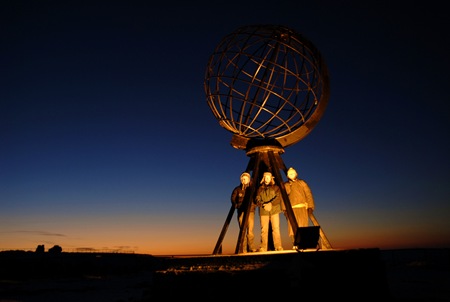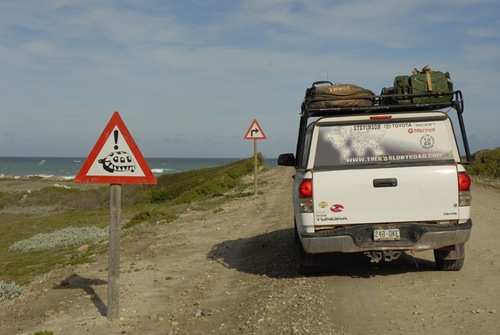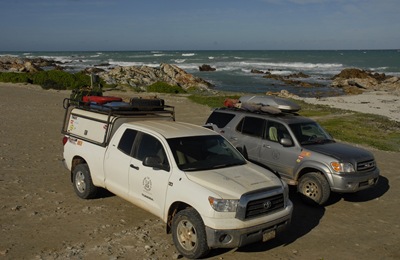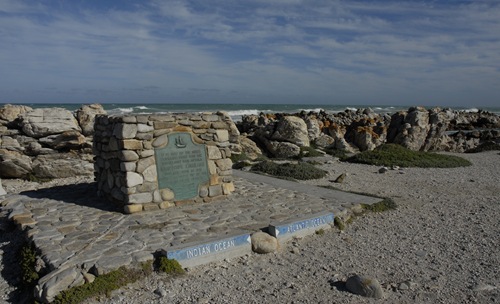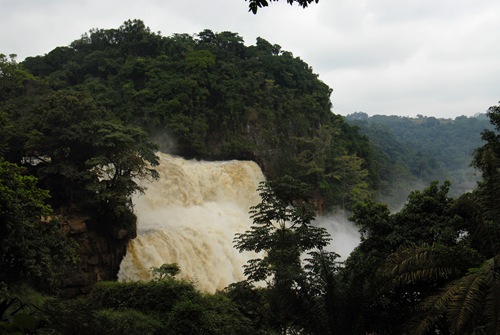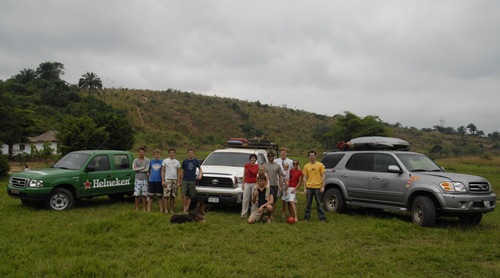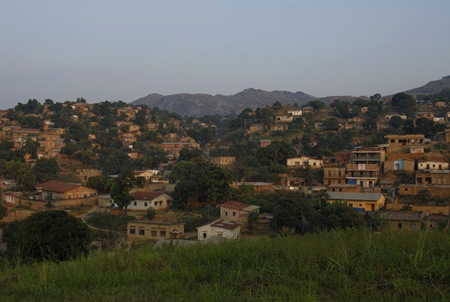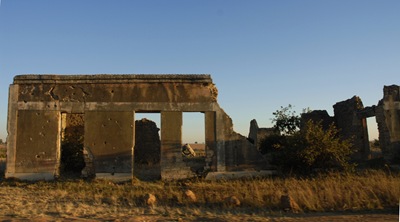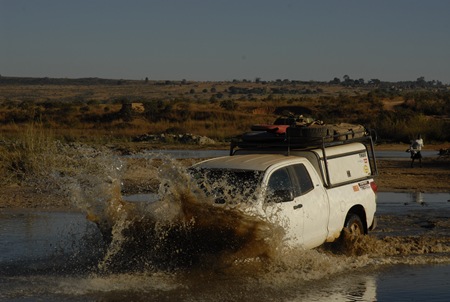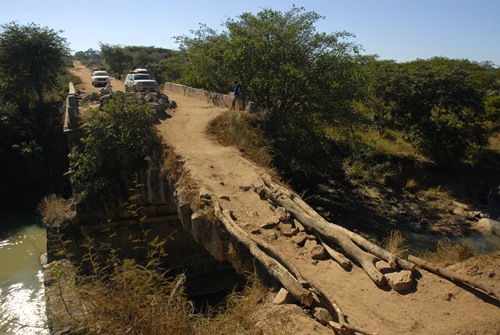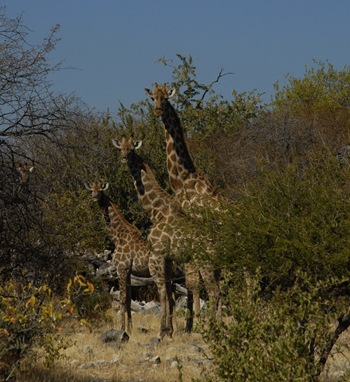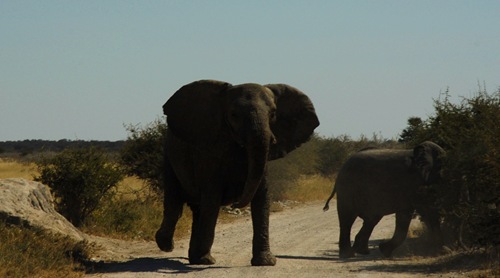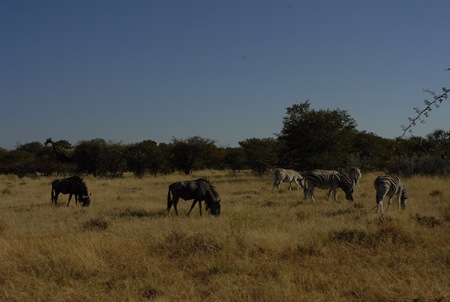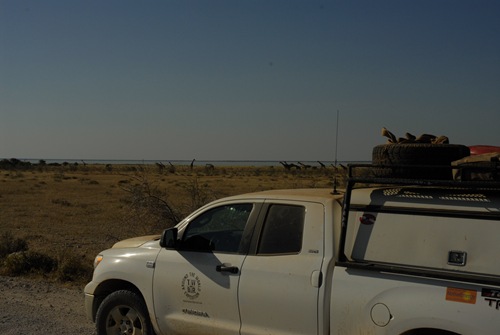If you ever find yourself in southern Namibia, you must stop by the Quivertree Park just north of the South African border and outside of Keetmanshoop. Some friends of ours in Windhoek had recommended the Park for an overnight stay on our way south and it actually makes the pages of Rough Guides and some other guidebooks. However, until you have seen this place with your own eyes, you have no idea what to expect and no description can really do the place any justice. The bottom line about the Quivertree Park, is that it is just plain Jane weird.
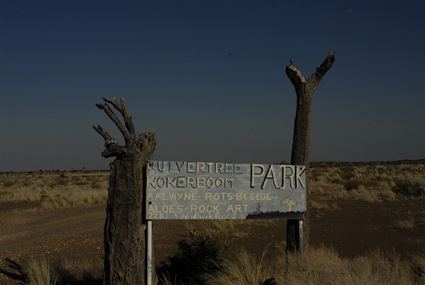
Not exactly the entrance to the Hilton
We arrived at the Park just after dark, which made driving down the long, lonely gravel path even more strange. The actual campsite is about a kilometer off the main highway and along the way, your imagination starts to run wild with images from horror movies like Wolf Creek or the Hills Have Eyes as your headlights illuminate some of the other residents of the park lingering along the road. There are absolutely no lights on around the campground and all of us were getting a little bit nervous about our choice of campsites that night. We finally ran into some other campers who assured us that the place was in fact a campground, the other residents were well behaved and that as far as they knew, we would make it through the night without getting murdered. This place was definitely like no other campsite I have ever bedded down at.
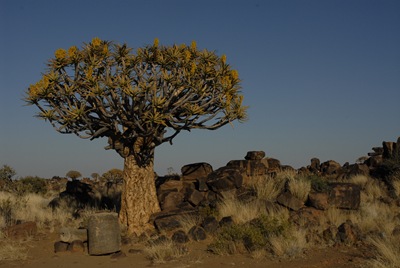
The Quiver Trees are unusual in and of themselves
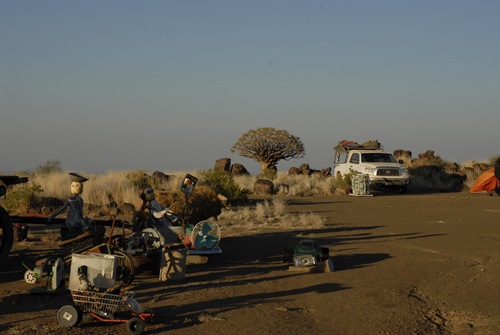
You are never alone while camping at the Quivertree Park
In the morning, you rise to find yourself in the middle of a large stand of Quiver Trees, trees unique to the region and aptly named, and realize that you are also in the middle of a very large collection of unusual art. You also realize that you had plenty of company throughout the night. The Park residents have been assembled in consultation with and are the brainchild of a 78 year old woman who runs the place. She actually lives in the next town these days, but has been putting together the strange and unusual artwork at Quivertree for many, many years. Honestly, I do not know what the overall objective of the Park is… maybe it is some sort of recycling project, maybe it is a display of unique art, or maybe it is just the tangible extension of a crazy old lady’s thoughts. Whatever the case may be, the Quivertree Park is definitely worth a visit, and if you do decide to stop by, make sure you arrive after dark… it will make the experience even more bizarre.
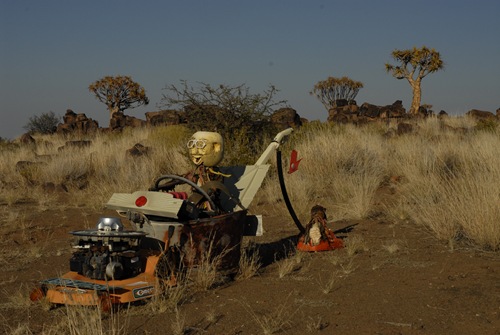
A fellow overlander
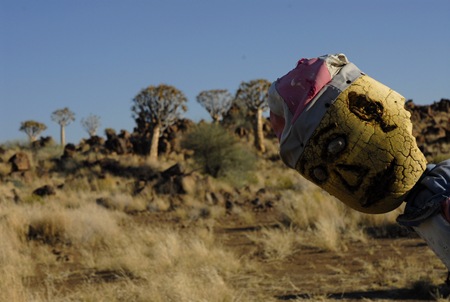
Park manager
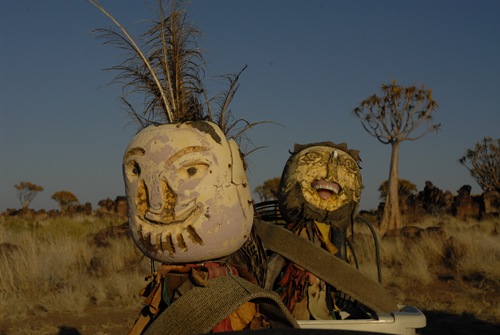
Not sure where they were from, but they appear to be having a good time
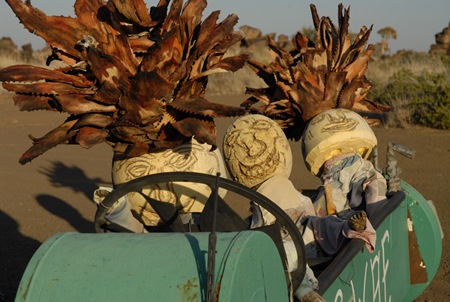
I got nothin…
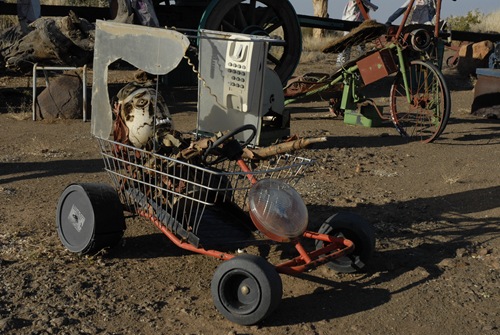
Sweet ride
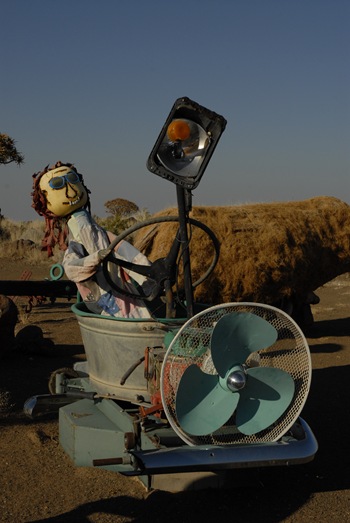
Not sure what the old lady was thinking on this one
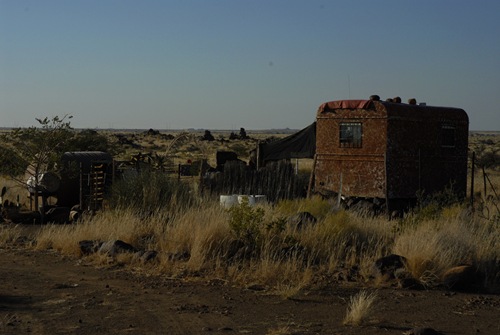
You try knocking on the door of the “park office” at night and see what your imagination starts to do
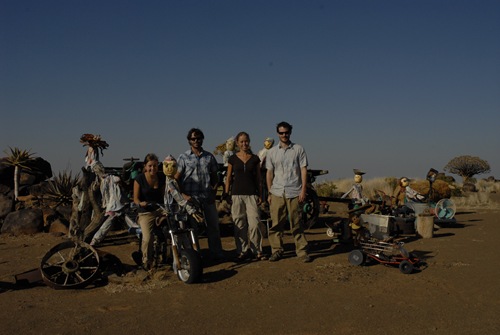
TWBR crew and our new Quivertree friends
INSERT_MAP
